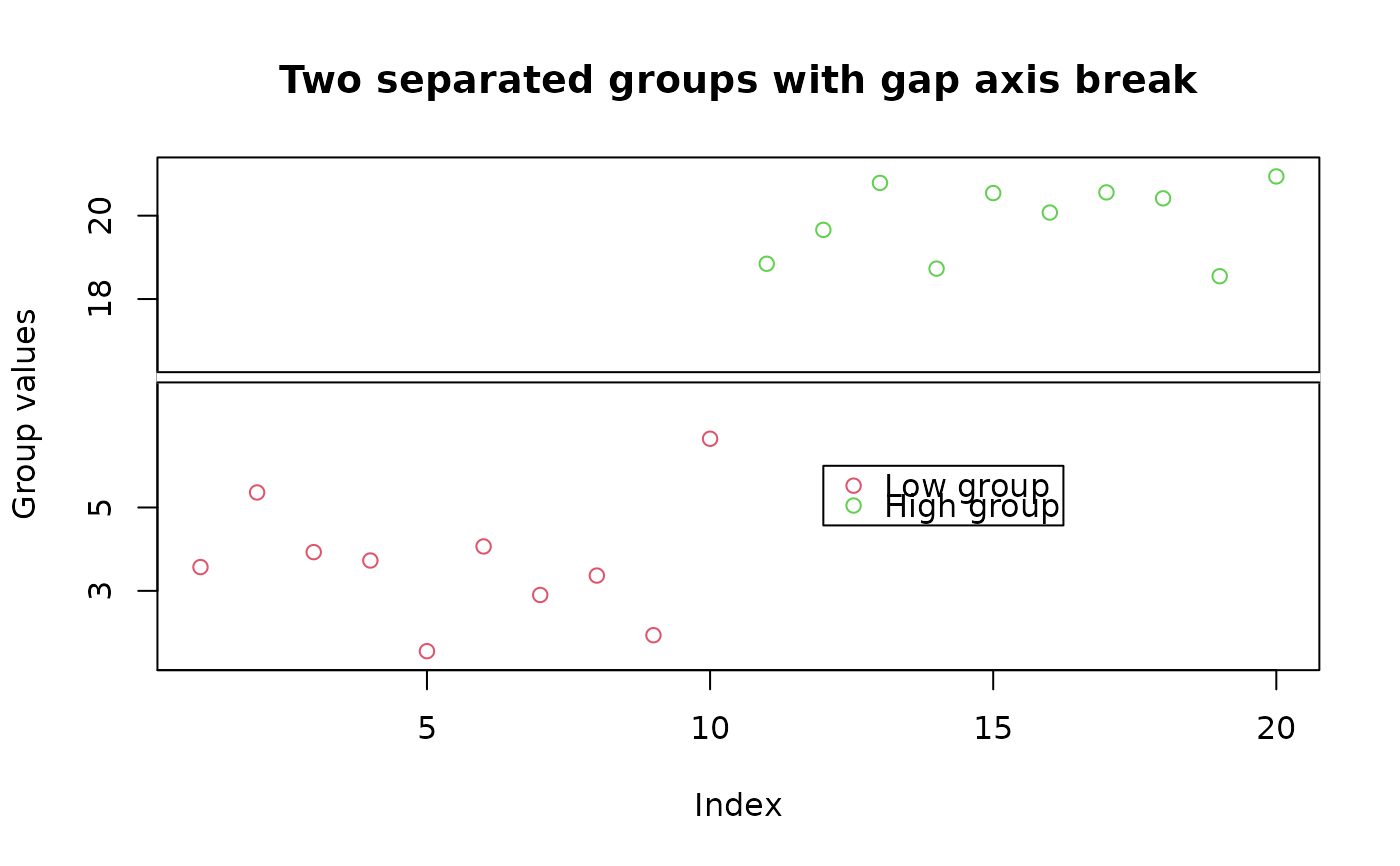Place a "break" mark on an axis
axis.break.RdPlaces a "break" mark on an axis on an existing plot.
axis.break(axis=1,breakpos=NULL,pos=NULL,bgcol="white",breakcol="black",
style="slash",brw=0.02)Arguments
- axis
which axis to break
- breakpos
where to place the break in user units
- pos
position of the axis (see axis).
- bgcol
the color of the plot background
- breakcol
the color of the "break" marker
- style
Either gap, slash or zigzag
- brw
break width relative to plot width
Value
nil
Details
The pos argument is not needed unless the user has specified a different position from the default for the axis to be broken.
Note
There is some controversy about the propriety of using discontinuous coordinates for plotting, and thus axis breaks. Discontinuous coordinates allow widely separated groups of values or outliers to appear without devoting too much of the plot to empty space. The major objection seems to be that the reader will be misled by assuming continuous coordinates. The gap style that clearly separates the two sections of the plot is probably best for avoiding this.
See also
Examples
plot(3:10, main = "Axis break test")
# put a break at the default axis and position
axis.break()
axis.break(2, 2.9, style = "zigzag")
 twogrp <- c(rnorm(10) + 4, rnorm(10) + 20)
gap.plot(twogrp,gap = c(8,16), xlab = "Index", ylab = "Group values",
main = "Two separated groups with gap axis break",
col = c(rep(2, 10), rep(3, 10)), ytics = c(3, 5, 18, 20))
legend(12, 6, c("Low group", "High group"), pch = 1, col = 2:3)
twogrp <- c(rnorm(10) + 4, rnorm(10) + 20)
gap.plot(twogrp,gap = c(8,16), xlab = "Index", ylab = "Group values",
main = "Two separated groups with gap axis break",
col = c(rep(2, 10), rep(3, 10)), ytics = c(3, 5, 18, 20))
legend(12, 6, c("Low group", "High group"), pch = 1, col = 2:3)
